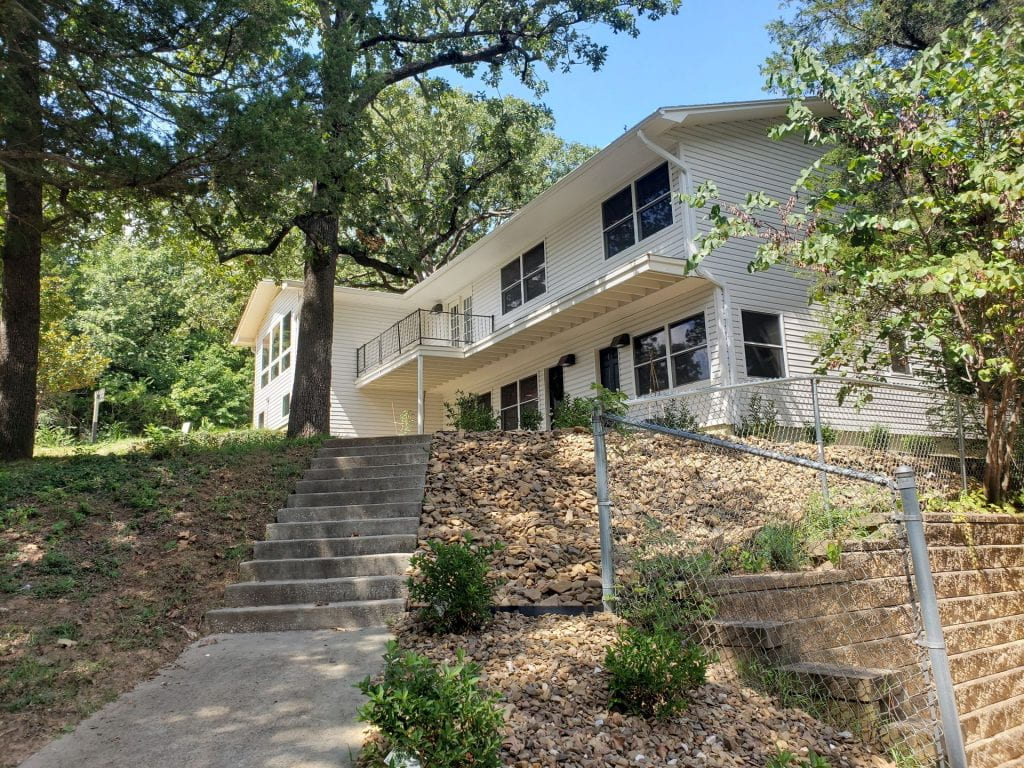Early Intervention Key to Help Find Autistic Children in the Arkansas Delta
On-going research by a UA associate professor is helping provide resources to families with autistic children in rural Arkansas.
By Kirsten Baird
The Razorback Reporter
To open avenues to greater resources for rural areas, training is given to individuals who provide support to the families of autistic children living in the Arkansas Delta, said an associate professor in the UA College of Education and Health Professions.
“My research area is in the area of autism spectrum disorders,” said UA associate professor Peggy Schaefer-Whitby, who was recently elected vice president of the Council of Exceptional Children Division on Autism and Developmental Disabilities, a national organization. “I really look at educational strategies to help teach and ameliorate some of the problems that people with autism have to face.”
Because autism is a spectrum disorder, meaning that conditions may vary, there are certain strengths and challenges that vary among individuals. There are different levels of learning, problem-solving, and thinking, based on where an individual is on the spectrum, said Schaefer-Whitby, who was honored by the Arkansas Alumni Association for her work in the Delta..
“Autism, or autism spectrum disorder (ASD), refers to a broad range of conditions characterized by challenges with social skills, repetitive behaviors, speech and nonverbal communication,” according to the Autism Speaks organization.
The Arkansas Autism and Developmental Disabilities Monitoring Program, managed through UAMS, received a four-year grant of $2.17 million, which enables researchers to conduct a statewide study.
The program looks “at all 8-year-olds in the state to see how many kids have autism, and they look at every county in the state,” Schaefer-Whitby said.
About one in 77 children in Arkansas are diagnosed as having autism, according to a report by the disabilities monitoring program.
With that data, Schaefer-Whitby and her team recognized that in southern Arkansas, far fewer children were diagnosed as having autism. Specifically, she said that fewer African-American children were diagnosed as having autism spectrum disorders.
“About 50-75% of kids on the autism spectrum, with good intervention, have really good outcomes,” Schaefer-Whitby said. “There is about another 25% of kids that we don’t really understand why. But, if we don’t diagnose these kids, and we don’t get these kids into interventions and these families the services they need, we are going to have long-term care for these kids, and the societal cost is greater.”
Deciding that it was time to figure out the reason behind the discrepancies in the data, Schaefer-Whitby followed the pathway of her research, rented an apartment in Helena, Arkansas, and lived there for one year. She needed to become part of the community before she could have an impact on that community, she said.
“I worked with UAMS East, Kids for the Future, Partners for Inclusive Communities, and Arkansas Autism Outreach Center,” Schafer-Whitby said. “We started going down to the Delta and set up an advisory board, and we would meet monthly with them to determine kind of what we need to focus on services down here.”
Another research project Schaefer-Whitby is conducting has to do with the factors other than the lack of resources that contribute to autism.
“I’ve been working on a qualitative study where I’m really looking at, and talking with families about their lived experiences of having a child with autism,” Schaefer-Whitby said.
Although research confirms that factors such as low socio-economic status impacts the ability to access service providers and resources, there are also other factors to consider that may have an impact on autism diagnosis, Schaefer-Whtiby said.
“I do believe there are some cultural variables that impact access to services and whether or not a family will step up to access those services,” Schaefer-Whitby said. Most of the families that have been validated through interventions are confirmed to be white, upper class, wealthy families.
“One of the strategies that I promote is that we need to look at family systems and family routines and adapt our behavioral interventions to meet their family context and the routines within their family system,” Schaefer-Whitby said.
Schaefer-Whitby is working toward finding each of the variables that attribute to families in rural areas hesitating to access services for their children.
“The other thing that I find when I meet with these families is that really we’re more alike than different, that we all want to do what’s best for our children, and we want the best outcome for our children” Schaefer-Whitby said.
Perspective is another big aspect that Schaefer-Whitby attributes to the differences in culture within the Delta.
“When we start looking at quality of life and stress related to these families, it’s perspective,” Schaefer-Whitby said. “Many of these families really look at the disability, or the impact of the disability on the family system, a little differently.”
Because of the different perspectives, Schaefer-Whitby has found that families are sometimes better able to cope with the impact that the disability has on their family structure.
In addition to cultural differences between urban and rural areas, there is also the matter of access to resources that is difficult for families to receive.
During her time in the Delta, Schafer-Whitby first identified three individuals who aspired to become behavior analysts. For each of those individuals to complete the 1,500 clinical hours required, she provided supervision for free.
Shannon Crozier and Jessica Love, founders of Behavior University, an online training platform specializing in therapy based on the science of learning and behavior, partnered with Schaefer-Whitby in her project.
“When we learned about the new project in the Delta, we were thrilled to see
what she was doing,” Crozier said. “As the project grew, we realized that there might be a way for us to help and so we contacted her to offer support.”
Behavior University offered to provide free Registered Behavior Technician training to 10 individuals who had been identified within the Delta. The training process includes a 40-hour online training and an observation from a behavior analyst. Schaefer-Whitby was the one to observe and certify that each of the trainees did indeed have the required skills.
“In the next several months, we’re hoping that we are going to have one behavior analyst down there and that we’ll have about 8-10 registered behavior technicians that can start working with the kids,” Schaefer-Whitby said.
“Families in rural areas lack access to many of the resources they need,” Crozier said. “Relying on people and resources in more urban centers is difficult and unreliable.”
Schaefer-Whitby hopes that through this project, there will be greater support and resources available for families living in the delta with a child in need of autism intervention, she said.



